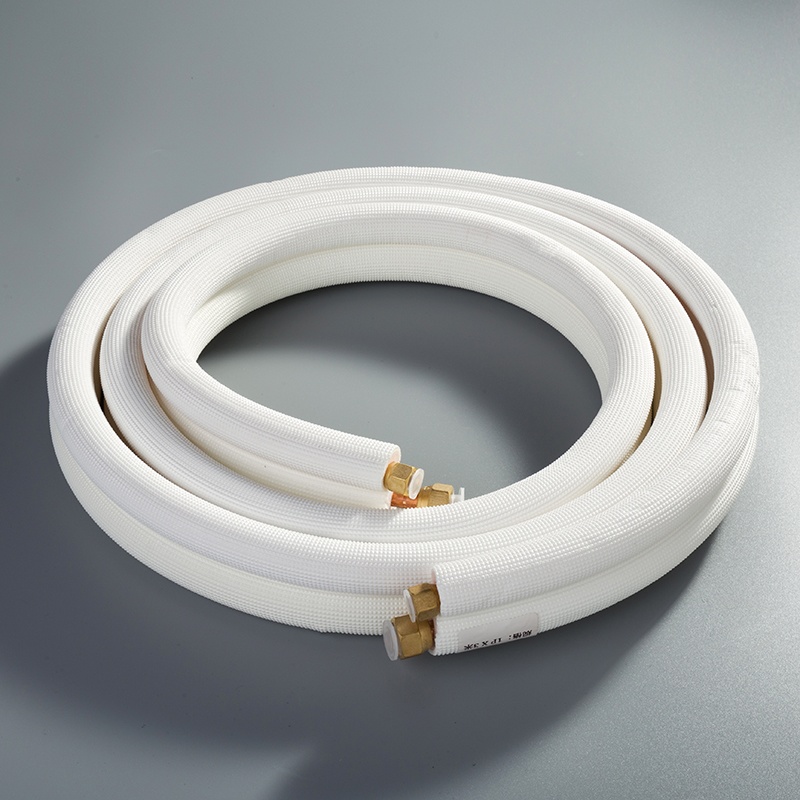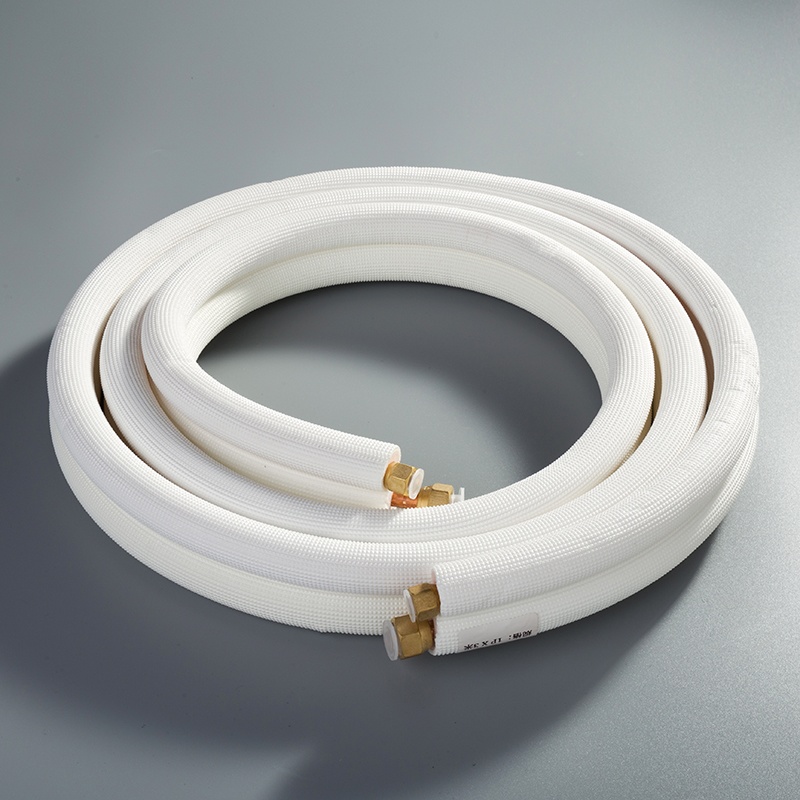How to Measure Copper Pipe Size with Precision

How to Measure Copper Pipe Size Accurately
Accurate measurement in plumbing and construction ensures proper fitting and function. Copper pipes, such as those manufactured by Baoyuan, serve various purposes, including water supply and HVAC systems. Essential tools for measuring copper pipe size accurately include a measuring tape, caliper, and pipe sizing charts. For more information on high-quality pure copper connecting pipes, visit https://copperpipe.net/products/.
Understanding Copper Pipe Sizes
Nominal vs. Actual Pipe Size
Definition of Nominal Size
Nominal size refers to a standardized dimension used for identifying pipes. This size does not represent the actual physical dimensions of the pipe. Instead, it serves as a convenient label for categorizing pipes. For example, a nominal 1-inch copper pipe does not have an exact 1-inch diameter.
Definition of Actual Size
Actual size indicates the true physical dimensions of a pipe. This includes the outer diameter (OD) and inner diameter (ID). The actual size is crucial for ensuring proper fittings and connections in plumbing systems. Measuring the actual size accurately helps avoid leaks and ensures efficient flow.
Why the Difference Matters
The difference between nominal and actual size matters because it affects compatibility with fittings and other components. Misunderstanding these sizes can lead to incorrect installations. Accurate knowledge of both sizes ensures that the right parts are selected for a project.
Types of Copper Pipes
Type K
Type K copper pipes have the thickest walls among the common types. These pipes are suitable for underground installations due to their durability. Type K pipes handle high-pressure applications effectively. These pipes are often used in water distribution systems.
Type L
Type L copper pipes have medium-thickness walls. These pipes are versatile and used in both residential and commercial plumbing. Type L pipes are suitable for interior water supply lines. These pipes offer a good balance between strength and flexibility.
Type M
Type M copper pipes have thinner walls compared to Type K and Type L. These pipes are commonly used in low-pressure applications. Type M pipes are often found in heating systems and domestic water service lines. These pipes are cost-effective but less durable than thicker-walled types.
Type DWV
Type DWV (Drain, Waste, and Vent) copper pipes are designed for non-pressurized applications. These pipes are used in drainage and venting systems. Type DWV pipes have thin walls and are not suitable for water supply lines. These pipes ensure proper waste removal and ventilation in plumbing systems.
Tools Required for Measuring Copper Pipes

Measuring Tape
Features to Look For
A reliable measuring tape should have clear, easy-to-read markings. The tape should be flexible enough to wrap around pipes without kinking. A lock mechanism helps maintain the measurement while noting down the dimensions. Durability is essential for long-term use in various environments.
How to Use It
To measure copper pipe size accurately, wrap the measuring tape around the pipe's outer diameter (OD). Ensure the tape fits snugly without any gaps. Note the circumference and divide by 3.1416 to find the OD. This method provides a precise measurement crucial for proper fittings.
Caliper
Types of Calipers
Calipers come in different types, including digital, dial, and vernier calipers. Digital calipers offer easy-to-read measurements on an electronic display. Dial calipers use a mechanical dial for readings. Vernier calipers have a sliding scale for manual measurements. Each type has its advantages depending on user preference and accuracy requirements.
Using a Caliper for Precision
To use a caliper, open the jaws and place them around the pipe. Ensure the caliper is perpendicular to the pipe for an accurate reading. Close the jaws until they touch the pipe's surface. Read the measurement from the scale or display. Calipers provide high precision, making them ideal for measuring both OD and wall thickness.
Pipe Sizing Charts
How to Read a Pipe Sizing Chart
Pipe sizing charts convert OD measurements into Nominal Pipe Size (NPS). Locate the measured OD on the chart. Find the corresponding NPS value. These charts help identify the correct pipe size for various applications. Understanding how to read these charts ensures accurate pipe selection.
Common Pipe Sizes and Their Uses
Common pipe sizes include 1/2 inch, 3/4 inch, and 1 inch. Each size serves different purposes. For example, 1/2 inch pipes are often used for domestic water supply lines. Larger sizes like 1 inch are used in commercial plumbing systems. Knowing common sizes and their uses helps in selecting the right pipe for specific needs.
Step-by-Step Guide to Measuring Copper Pipe Size

Measuring the Outer Diameter (OD)
Steps to Measure OD
Wrap a flexible measuring tape around the pipe's outer circumference.
Ensure the tape fits snugly without any gaps or overlaps.
Note the circumference measurement.
Divide the circumference by 3.1416 to obtain the outer diameter (OD).
Common Mistakes to Avoid
Avoid using a rigid tape that cannot wrap smoothly around the pipe.
Do not measure the circumference loosely, as this will lead to inaccurate results.
Ensure the tape is not twisted or kinked during measurement.
Measuring the Inner Diameter (ID)
Steps to Measure ID
Use a caliper to measure the inner diameter directly.
Open the caliper jaws and place them inside the pipe.
Ensure the caliper is perpendicular to the pipe walls.
Close the jaws until they touch the inner surface of the pipe.
Read the measurement from the caliper scale or display.
Importance of ID in Pipe Fitting
The inner diameter (ID) determines the flow capacity of the pipe. Accurate ID measurements ensure proper fitting and connection in plumbing systems. Incorrect ID measurements can lead to leaks and inefficient flow.
Measuring the Wall Thickness
Steps to Measure Wall Thickness
Use a caliper to measure the wall thickness.
Open the caliper jaws and place one jaw on the outer surface and the other on the inner surface.
Ensure the caliper is perpendicular to the pipe walls.
Close the jaws until they touch both surfaces.
Read the measurement from the caliper scale or display.
How Wall Thickness Affects Pipe Performance
Wall thickness impacts the pipe's durability and pressure-handling capacity. Thicker walls provide better resistance to pressure and external damage. Thinner walls may be suitable for low-pressure applications but offer less durability.
Tips for Ensuring Accurate Measurements
Double-Checking Measurements
Why It's Important
Double-checking measurements ensures precision and prevents errors. Accurate measurements guarantee proper fitting and function in plumbing systems. Mistakes in measurement can lead to costly repairs and inefficiencies.
Techniques for Double-Checking
Use multiple tools to verify measurements. Measure the same dimension more than once. Compare the results from different tools like a measuring tape and a caliper. Record each measurement and cross-reference them. Consistency in readings confirms accuracy.
Maintaining Your Measuring Tools
Cleaning and Storage Tips
Clean measuring tools after each use. Remove any debris or residue that may affect accuracy. Store tools in a dry, safe place to prevent damage. Use protective cases for delicate instruments like calipers. Proper storage extends the lifespan of measuring tools.
Calibration and Maintenance
Regularly calibrate measuring tools to maintain accuracy. Follow the manufacturer's guidelines for calibration procedures. Check for wear and tear on tools and replace them if necessary. Schedule routine maintenance to ensure tools remain in optimal condition. Accurate tools are essential for precise measurements.
Accurate measurement of copper pipes ensures proper fitting and optimal performance in plumbing systems. Practicing and refining measuring skills leads to better results and fewer errors. Consistency in using reliable tools like measuring tapes and calipers enhances precision. Regular maintenance and calibration of these tools maintain their accuracy. Following these steps will make the pipe installation process smoother and more efficient.
"The experienced professionals at Proskill can help you make your pipe installation process smoother."
Achieving precision in measurements guarantees the success of plumbing projects and prevents costly mistakes.
See Also
Mastering Copper Pipe Sizing: A Comprehensive How-To
Simple Steps: Mastering Copper Pipe Measurement
Quick Tips: Mastering Copper Pipe Measurement
Simple Techniques: Mastering Copper Pipe Measurement for DIY


